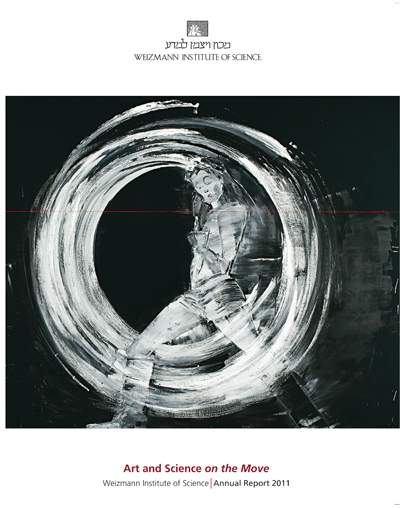
You could not step twice into the same river. – Heraclitus of Ephesus (475-535 BCE)
Heraclitus saw the river not as an “object,” but rather as a process, a state of flow in which everything changes; nothing remains constant. Science, in many respects, is such a river. It is truly a process in which theories and entire world views are in flux, ceding their places to newer ideas as new facts arise.
In science, yesterday’s certainties may not “hold water” tomorrow, in light of the findings of today’s research. Here, scientists working at the cutting edge share much with contemporary artists: a view of the world in a continuous state of flux; the desire to continually know more, to keep delving deeper into the roots of our existence; and a willingness to relinquish old concepts for new ones. For them, traditional divisions become increasingly irrelevant. Thus, physicists and mathematicians research complex biological phenomena. Meanwhile, video artists experiment with sculpture; photographers work elements of sound into their art; and painting is recast in new forms that retake center stage by storm.
In this annual report, short descriptions of the work of ten Weizmann Institute scientists are paired with artworks by well-known Israeli and international artists. Both the research and the artwork involve a stream of inspiration, movement and transformation. As Heraclitus also said: “Nothing endures but change.”
Cover: Tamar Getter. Detail from the painting - installation GO2, a band-painting in the Sam and Ayala Zacks Pavilion, Tel Aviv Museum of Art.
Oil-tempera, wax, oil chalk, dry pigment and industrial marker (applied with spatula, squeegee, rubber pieces, sponge, mason’s plummet and brush) on canvas. Height 184 cm; total length ~100 m. Above: Part of the GO2 installation
Tamar Getter, b. Tel Aviv, 1953, is one of the leaders of the avant-garde movement in Israel. GO2 is one of two new installations Getter created for a big retrospective of her work at the Tel Aviv Museum of Art in 2010. Aside from the new projects, this show included sections of her various work cycles over the years, including Tel Hai, Landscapes, Artificialia Naturalia, History Lessons and Recruits. Getter’s work expands our understanding of the modern world and relates to artistic creation as an ongoing research project.
Trojan Horse Ride
When a mimivirus forcibly ejects its genetic material into a cell, it sends along building materials to make a “virus factory”
Dancing with the Light
On the molecular scale, plants are in constant motion as they adapt to a changing environment
Information Trail
Millions of immune cells are on the move in our bodies, passing on information about possible threats along the way
The Poetry of Science
A competition held in memory of Prof. Ofer Lider bridges the gap between art and science
"Wings" by Dr. Racheli Efrat Steinberg
Anyone who really wants to fly, can. It’s just a matter of will. That’s what Uri told me.
Spinning on Target
Quick laser pulses are the key to turning molecules into tiny “Frisbees” aimed at a target
The Upside of Self-Cannibalism
Cellular “trash haulers” are assembled on the spot through a unique membrane fusion process
The Health Patrol
Revealing what makes B cells migrate from one organ to another may suggest new treatments for leukemia
Déjà vu
An algorithm for zooming in on repeating elements in images and videos can help reconstruct missing information
Black Hole Swing
When two black holes get close, what are the chances they will meet and emit gravitational waves?
Random Walks in Random Environments
What happens when a person strolling along an intersecting path chooses directions with a roll of the dice?
Speed Limits
Ultrafast laser pulses are helping to reveal the movements of excited electrons in tiny crystals






















